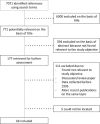Inequity in India: the case of maternal and reproductive health
- PMID: 23561028
- PMCID: PMC3617912
- DOI: 10.3402/gha.v6i0.19145
Inequity in India: the case of maternal and reproductive health
Abstract
Background: Millennium Development Goal (MDG) 5 is focused on reducing maternal mortality and achieving universal access to reproductive health care. India has made extensive efforts to achieve MDG 5 and in some regions much progress has been achieved. Progress has been uneven and inequitable however, and many women still lack access to maternal and reproductive health care.
Objective: In this review, a framework developed by the Commission on Social Determinants of Health (CSDH) is used to categorize and explain determinants of inequity in maternal and reproductive health in India.
Design: A review of peer-reviewed, published literature was conducted using the electronic databases PubMed and Popline. The search was performed using a carefully developed list of search terms designed to capture published papers from India on: 1) maternal and reproductive health, and 2) equity, including disadvantaged populations. A matrix was developed to sort the relevant information, which was extracted and categorized based on the CSDH framework. In this way, the main sources of inequity in maternal and reproductive health in India and their inter-relationships were determined.
Results: Five main structural determinants emerged from the analysis as important in understanding equity in India: economic status, gender, education, social status (registered caste or tribe), and age (adolescents). These five determinants were found to be closely interrelated, a feature which was reflected in the literature.
Conclusion: In India, economic status, gender, and social status are all closely interrelated when influencing use of and access to maternal and reproductive health care. Appropriate attention should be given to how these social determinants interplay in generating and sustaining inequity when designing policies and programs to reach equitable progress toward improved maternal and reproductive health.
Keywords: India; disadvantaged populations; inequity; maternal and reproductive health; millennium development goal 5; social determinants of health.
Figures
References
-
- Registrar General, India. Special bulletin on maternal mortality in India 2007–09. Sample registration system bulletin. 2011. Available from: http://censusindia.gov.in/Vital_Statistics/SRS_Bulletins/Final-MMR%20Bul... [cited 29 June 2012]
-
- Withhead M, Dahlgren G. Studies on Social and Economic Determinants of Population Health No. 2. Report number WHOLIS E89383. Copenhagen: WHO Regional Office for Europe; 2006. Levelling up (part1): a discussion on concepts and principles for tackling social inequities in health; p. 44. Available from http://who.int/social_determinants/resources/leveling_up_part1.pdf [cited 2 July 2012]
Publication types
MeSH terms
LinkOut - more resources
Full Text Sources
Other Literature Sources
Medical


